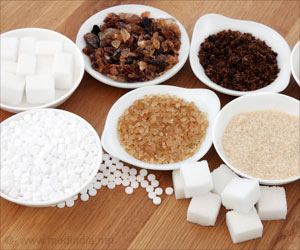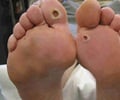Is tax on sugar containing beverages an effective initiative to fight Diabetes? Read more to find out.
- A single can of a sugar sweetened beverage contains sugar equivalent to around 10 teaspoons of table sugar
- People who consume 1 to 2 sugary drinks regularly are at a 26% greater risk of developing type 2 diabetes
- 10 year estimates suggest that a 1% sugar tax would result in more than US$ 17 billion savings in healthcare costs
There is an urgent need to bring into action comprehensive action plans that combine taxation, restriction in marketing of SSB’s and awareness to reduce the over-consumption of sugars. It can turn out to be an effective measure to halt the epidemic of obesity and diabetes (1✔ ✔Trusted Source
Fructose and Cardiometabolic Health: What the Evidence from Sugar-Sweetened Beverages Tells Us
Go to source).
TOP INSIGHT
Evidence suggests that a tax on sugary drinks that increase prices by 20% can lead to a 20% reduction in consumption, thus preventing Obesity and Diabetes #sugartaxes #sweetenedbeveragetaxes #taxes #medindia
Why Is there a Need for Sugar Tax? : Facts
- The worldwide prevalence of Obesity has nearly tripled since 1975
- There has been an exponential increase in the prevalence of Diabetes from 108 million in 1980 to 422 million in 2014
- The number of obese children and adolescents has risen tenfold since 1975
Taxes on sugary drinks: Why do it?
Go to source).
Sugar Tax: Will It Really Work? Case Study Offers Insight
Mexico implemented a 10% tax on SSB’s in January 2014 which resulted in a 5·5% decrease in sales of the same by the end of the year. The 2-year data shows an impressive further 9·7% drop in sales in 2015, with the largest decrease among those who are disproportionately affected by diet-related conditions such as type 2 diabetes and obesity.Several companies including UK soft drinks company A.G. Barr and supermarket chain Tesco have already begun to reformulate their products in anticipation of the tax by reducing or ridding them of sugar and other unhealthy ingredients such as caffeine and salt.
Combining discounts on healthy foods with taxes on unhealthy ones might boost health gains as per a recent systematic review and meta-analysis. There is also an urgent need to assess the effect of these policies on hard health measures in the population (3✔ ✔Trusted Source
Sweet success: will sugar taxes improve health?
Go to source).
Tips to Ensure Low Sugar Consumption
- Cutting down on refined sugars are replacing them with natural sweeteners
- Consume sugar in moderation based on a planned diet
- Compare food labels and consume food products with no added sugars
- Consumption of a balanced diet with seasonal fruits and vegetables
- Supplementation of micronutrients in the diet and daily intake (4✔ ✔Trusted Source
Tips for Cutting Down on Sugar
Go to source)
The Desired Impact and Target Audience of Implementing Sugar Tax
- The relationship between SSB, obesity and T2DM is a complex problem statement that needs to be addressed in a comprehensive manner
- A collective and collaborative effort is necessary to combat the obesity epidemic
- Intervention programs should be tailored to age, gender, language, and culture of the local community
- Taxation can reduce SSB consumption by direct economic incentive, earmarking revenues to support healthy foods, and sending negative message
- Besides initiatives discussed above, other prominent strategies in reducing SSB intake and obesity and T2DM include parents/children education , restriction on fast food outlets that provide a large volume of SSBs , calorie labeling and value sizing of available products along with regulating SSB advertising and marketing (5✔ ✔Trusted Source
Sugar-Sweetened Beverage, Obesity, and Type 2 Diabetes in Children and Adolescents: Policies, Taxation, and Programs
Go to source)
- Fructose and Cardiometabolic Health: What the Evidence from Sugar-Sweetened Beverages Tells Us - (https://www.ncbi.nlm.nih.gov/pmc/articles/PMC4592517/)
- Taxes on sugary drinks: Why do it? - (https://iris.who.int/bitstream/handle/10665/260253/WHO-NMH-PND-16.5Rev.1-eng.pdf)
- Sweet success: will sugar taxes improve health? - (https://www.thelancet.com/journals/landia/article/PIIS2213-8587(17)30070-0/fulltext)
- Tips for Cutting Down on Sugar - (https://www.heart.org/en/healthy-living/healthy-eating/eat-smart/sugar/tips-for-cutting-down-on-sugar)
- Sugar-Sweetened Beverage, Obesity, and Type 2 Diabetes in Children and Adolescents: Policies, Taxation, and Programs - (https://www.ncbi.nlm.nih.gov/pmc/articles/PMC6025796/)
Source-Medindia
 MEDINDIA
MEDINDIA





 Email
Email










